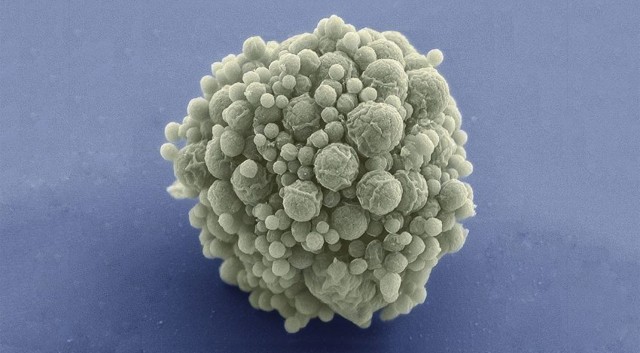Smallest-yet genome reveals how little we know about life — synthetic or real

Tags: USA
Smallest-yet genome reveals how little we know about life — synthetic or real published by Evanvinh
Writer Rating: 5.0000
Posted on 2016-03-25
Writer Description: Evanvinh
This writer has written 733 articles.
his week, a team of biologists headed by genomics pioneer Craig Venter published a study in Science that should amaze and excite the world: they built a life-form, and they have no idea how it works. It’s an incredible achievement that’s been decades in the making, and while it might seem like it would be a disappointment that one of our first steps into the field of synthetic biology has made our own ignorance so plain, the reality is that it only shows the incredible room left for advancement. Think genetic and medical engineering are coming up with cool things now? Just wait until they start answering some of the pointed new questions raised by this incredible study.
The idea to create the simplest life-form possible has occurred to just about everybody who has ever studied genetics. It’s both intuitively interesting and important — what are the base, indispensable genetic technologies that life cannot do without? Figuring that out would not only grant insight into genetics, but into the definition of life itself. What aspects of life are essential, and which are simply nice to have? And, on a more human level, if we can build such a life-form, then we can legitimately claim to understand it.
At least, that was the idea, but it didn’t end up playing out that way at all.
 When Venter’s team decided to try building a microbe with the simplest possible genome (the fewest possible number of genes) they went to nature for a starting point. Beginning in 1995, they worked to sequence the genome of the simplest life-forms known, landing on a microbe called M. mycoides, and eventually transplanted a modified version of its genome into the body of a different organism, producing a viable new life-form. This “Syn 1.0“ microbe was hailed as the beginning of synthetic biology.
When Venter’s team decided to try building a microbe with the simplest possible genome (the fewest possible number of genes) they went to nature for a starting point. Beginning in 1995, they worked to sequence the genome of the simplest life-forms known, landing on a microbe called M. mycoides, and eventually transplanted a modified version of its genome into the body of a different organism, producing a viable new life-form. This “Syn 1.0“ microbe was hailed as the beginning of synthetic biology.
But even though it’s the simplest we know of in nature, that doesn’t mean it’s the simplestpossible, and so the team tried to turn nature’s smallest into the smallest that could ever be. They systematically inactivated gene after gene to try to figure out which were totally necessary, and then took their best shots at designing a stripped-down genome that could live. It was a failure. When they built and implanted their custom-designed genomes, the resulting synthetic cells did not live. Clearly, we did not understand the functions of these genes as well as we’d thought.
Before going on, let’s be clear about what these organisms are — crippled genetic freaks that could never survive outside of the lab. The team has removed any gene they can remove, even if that removal requires them to take some action in compensation. If the cells are creating a particular nutrient with Gene A, and that nutrient can be usefully provided by the scientists in the petri dish, then out comes that gene and in goes the nutrient. Thus, the only genes left over are those that are necessary for life, even in the most forgiving environment imaginable — which is exactly what these scientists provided.
 The road to creating a viable cell with such a stripped-down metabolic strategy was typical of the new biology: the researchers turned to computers, and brute-force statistical analysis. They broke the natural, functional M. mycoides genome into eight parts and mixed and matched these segments to watch the results in (potentially) living organisms. This “design-build-test” model used each test to inform the choices made on the next one, and their statistical eventually began to pick out genes they had not seen before.
The road to creating a viable cell with such a stripped-down metabolic strategy was typical of the new biology: the researchers turned to computers, and brute-force statistical analysis. They broke the natural, functional M. mycoides genome into eight parts and mixed and matched these segments to watch the results in (potentially) living organisms. This “design-build-test” model used each test to inform the choices made on the next one, and their statistical eventually began to pick out genes they had not seen before.
It caught several genes that had previously been missed despite exerting necessary control on previously known essential genes. It also found pairs of genes that perform the same essential function, so deleting each individually will tell you they’re both dispensable, while deleting both makes life impossible. This approach led them to remove some genes from their previous custom designs, and to add a whole bunch of others highlighted by their analysis. The organism that arises from this new genome has been dubbed Syn 3.0, and with a division rate of about every three hours it’s fairly viable compared to similar microbes.
The crux of the story is this: an astonishing number of the genes added to Syn 3.0 at the behest of their computer model, while apparently essential for life, have no known function. Their final genome had exactly 473 genes in it, and a whopping 149 of these are currently mysterious.
That is, in essence, the exact opposite of what this was supposed to reveal. By reducing the number of genes, we were supposed to simplify the processes those gene produce, to the extent that we could say that we understand those processes. Instead, all we’ve revealed is how much we don’t know, but at least that idea is no longer abstract; in a purely genetic sense, we’re pretty much 324/473 = 68.5% of the way to fully answering a very simple iteration of the core question of biology.
Genomics pioneers James Watson (left) and Craig Venter (right).
Getting a fully characterized version of Syn 3.0 could take a year, or a decade, or five decades — none of these timelines would surprise me. But once we do get there, we will fundamentally have a life-form we understand on a genetic level, a foundation on which to build. That’s what we’re much better at as a species, I’d argue: building up from knowns into empty possibility space, rather than burrowing down from knowns into concrete unknowns.
Here’s how things will likely go: First, Syn 3.0 will revolutionize science by acting as an increasingly well-characterized scaffold on which to design new experiments and tick off a function for all 149 of the remaining genes. Then, once all or at a vast majority of those are understood, Syn 3.0 (or more likely 12.0, or something) will revolutionize science again by letting biologists slowly and systematically step beyond the core 473 genes. At that point, we’ll be engineering life in a totally intentional sense, literally using them as mechanical tools.
From there, absolutely nobody can predict where we’ll go.
Sources: http://www.extremetech.com/extreme/225523-smallest-yet-genome-reveals-how-little-we-know-about-life-synthetic-or-real
You have the right to stay anonymous in your comments, share at your own discretion.




